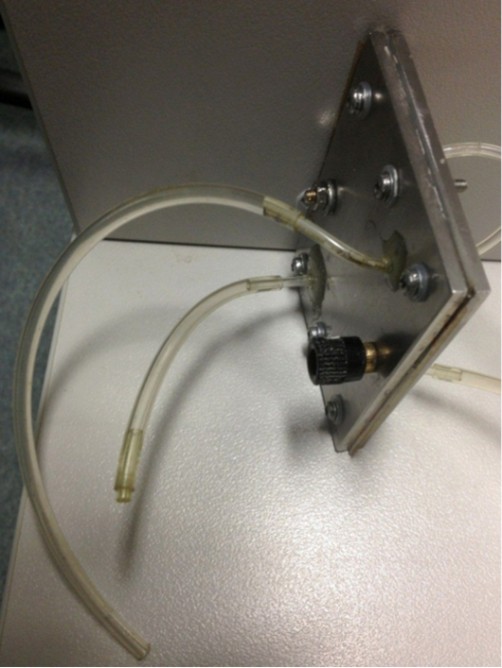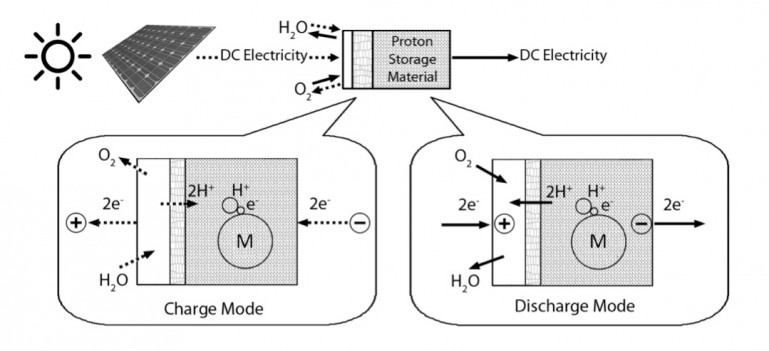Proton flow battery simplifies hydrogen power
By Darren Quick
February 12, 2014

Associate Professor John Andrews with an experimental preliminary proof of concept proton flow battery system (Photo: RMIT)
Just as hydrogen fuel cell vehicles – big and small – start heading to the road, researchers at RMIT University in Melbourne, Australia, have come up with the concept of a proton flow battery that could expand the reach of hydrogen-based electrical energy systems as well as provide a potential alternative to lithium ion batteries.
Instead of conventional hydrogen-based electrical energy systems that require the production, storage and recovery of hydrogen gas, the proton flow device operates more like a battery.
Conventional systems start with an electrolyzer that splits water into oxygen and hydrogen gas, which is then stored before it is used in a fuel cell to generate electricity through the chemical reaction resulting from combining the hydrogen gas and oxygen from the air. The proton flow battery operates a little differently by integrating a metal hydride storage electrode into a reversible proton exchange membrane (PEM) fuel cell.
"The key innovation is to combine a reversible fuel cell with this integrated storage electrode," said lead researcher Associate Professor John Andrews, from RMIT's School of Aerospace, Mechanical and Manufacturing Engineering. "We've eliminated a whole step of going from protons to gas and we've got our hydrogen directly into a solid state storage."
During charging, instead of splitting water into oxygen and hydrogen and storing the resultant hydrogen gas, the concept battery would take the protons (hydrogen ions) produced when splitting water and combine them with electrons and metal particles in one electrode of a fuel cell. This stores the energy in the form a solid-state metal hydride, with electricity (and water) produced when the process is reversed and the protons are combined with oxygen from the air.
"As only an inflow of water is needed in charge mode – and air in discharge mode – we have called our new system the 'proton flow battery'," said Associate Professor Andrews. "Powering batteries with protons has the potential to be a much more economical device than using lithium ions, which have to be produced from relatively scarce mineral, brine or clay resources."
In principle, the researchers say the proton flow battery could have an energy efficiency comparable to a lithium ion battery, but would offer greater energy density.
"Our initial experimental results are an exciting indicator of the promise of the concept, but a lot more research and development will be necessary to take it through to practical commercial application," Associate Professor Andrews said.
The team has created an experimental preliminary proof of concept battery system that measures 65 x 65 x 9 mm (2.5 x 2.5 x 0.3 in) and published a paper on the device in the International Journal of Hydrogen Energy.
Source: RMIT, ABC Science



